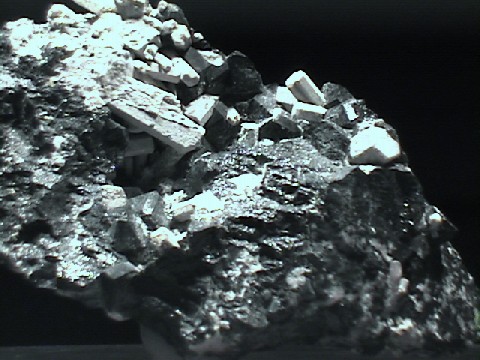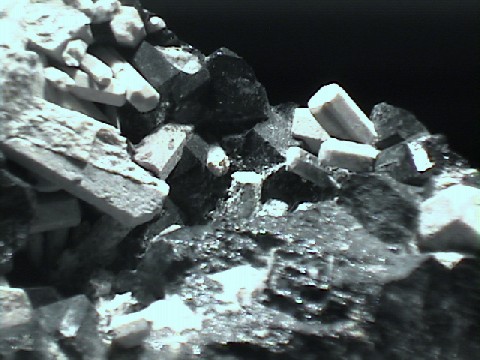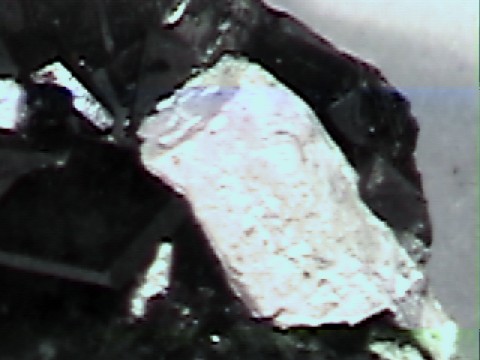 THE MINERAL NEPHELINE
THE MINERAL NEPHELINE
- Chemistry: (Na, K)AlSiO4 , Sodium Potassium Aluminum Silicate.
- Class: Silicates
- Subclass: Tectosilicates
- Group: Feldspathoid.
- Uses: As mineral specimens and as raw material for special kinds of glass and ceramics.
Specimens
The formula of nepheline in some sources will list it as NaAlSiO4. There are very few natural nephelines that have this "pure" chemistry although it produces a stable structure and it is manufactured for use in ceramics and glass production. Potassium is always present in some amounts and often the chemical analysis of nepheline will approach Na3K(AlSiO4)4. This result reflects the fact that the alkali sites for the sodiums and potassiums have an interesting difference in the amount of space within the nepheline structure. There is actually one site out of four that is larger than the other three sites. This larger site is a more comfortable fit for the larger potassium ion.
Nepheline is a member of the feldspathoid group of minerals. Minerals whose chemistries are close to that of the alkali feldspars but are poor in silica (SiO2) content, are called feldspathoids. As a result or more correctly as a function of the fact, they are found in silica poor rocks containing other silica poor minerals and no quartz. If quartz were present when the melt was crystallizing, it would react with any feldspathoids and form a feldspar. Localities that have feldspathoids are few.
Nepheline is reactive to acids although it does not bubble like many of the carbonates. If powdered it will dissolve in hydrochloric acid and if clear specimens are dipped in acid they will become cloudy or frosted. This could be helpful in distinguishing nepheline from some similar looking feldspars, scapolite and cryolite.
The greasy luster of nepheline also is diagnostic. Massive nepheline with a greasy luster is given the variety name "eleolite" which is derived from the greek word for oil. Nepheline is derived from the greek word for cloud in allusion to its cloudy or translucent crystals and masses.
PHYSICAL CHARACTERISTICS:
- Color is usually off white to gray or brown and occasionally other tints.
- Luster is mostly greasy to dull in weathered specimens.
- Transparency: Crystals are translucent to more rarely transparent.
- Crystal System: Hexagonal; 6
- Crystal Habits: Usually massive or granular. Some prismatic to columnar crystals are found with a simple hexagonal cross section.
- Cleavage is poor, in three directions, prismatic, but rarely seen.
- Fracture is conchoidal to uneven.
- Hardness is 5.5 - 6
- Specific Gravity is 2.6+ (average)
- Streak is white.
- Other Characteristics: Application of acids onto the surface of nepheline will cause a cloudy frosting and powdered nepheline will dissolve in hydrochloric acid.
- Associated Minerals include calcite, feldspars such as albite, apatite, biotite, hornblende, cancrinite, sodalite and other feldspathoids.
- Notable Occurrences include Kola Pennisula, Russia; Mt. Vesuvius, Italy; Bancroft area, Ontario, Canada and Kennebec Co., Maine, USA.
- Best Field Indicators luster, associations, reaction to acids, locality and hardness.






